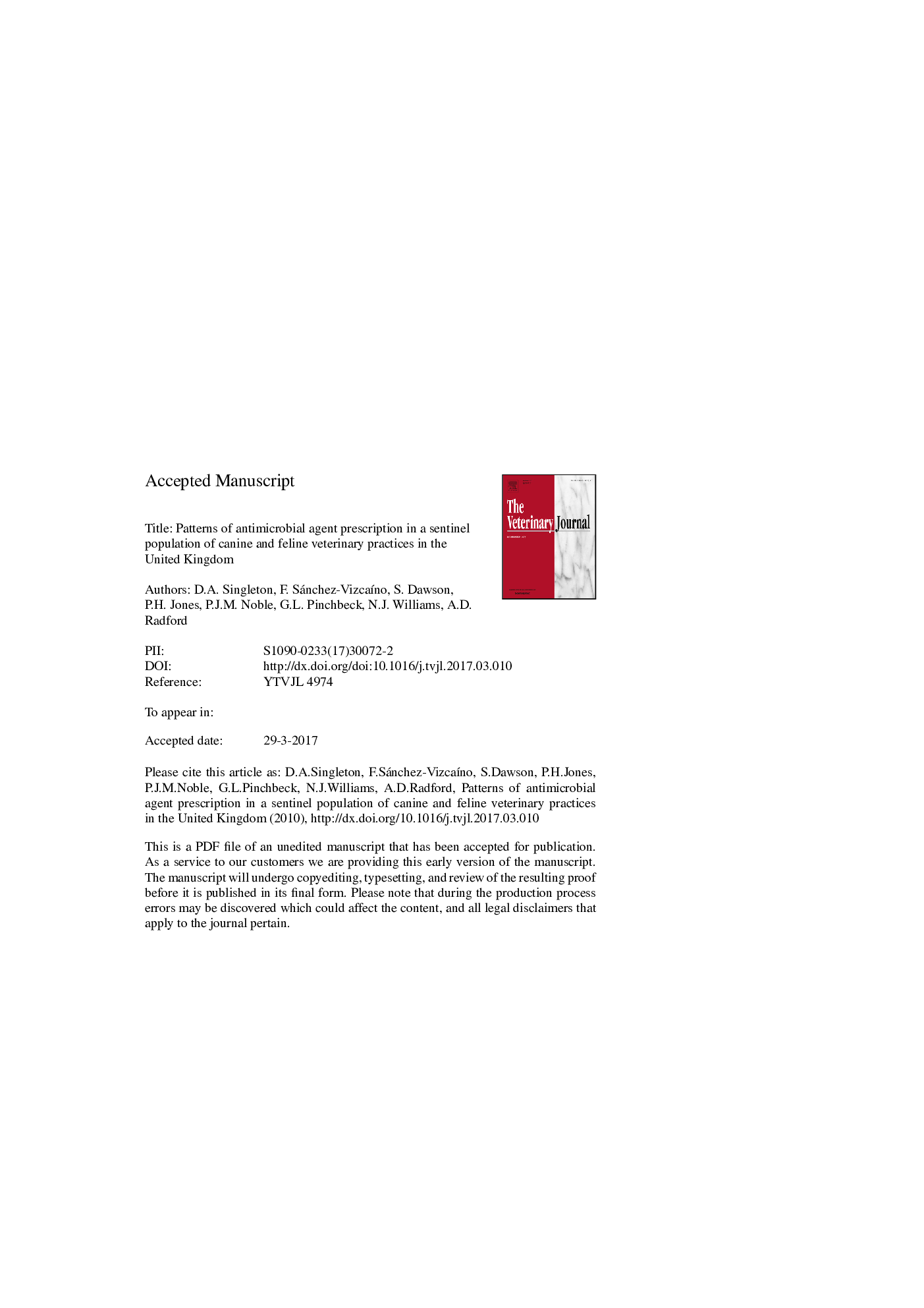| Article ID | Journal | Published Year | Pages | File Type |
|---|---|---|---|---|
| 5544926 | The Veterinary Journal | 2017 | 28 Pages |
Abstract
Antimicrobial resistance is an increasingly important global health threat and the use of antimicrobial agents is a key risk factor in its development. This study describes antimicrobial agent prescription (AAP) patterns over a 2Â year period using electronic health records (EHRs) from booked consultations in a network of 457 sentinel veterinary premises in the United Kingdom. A semi-automated classification methodology was used to map practitioner defined product codes in 918,333 EHRs from 413,870 dogs and 352,730 EHRs from 200,541 cats, including 289,789 AAPs. AAP as a proportion of total booked consultations was more frequent in dogs (18.8%, 95% confidence interval, CI, 18.2-19.4) than cats (17.5%, 95% CI 16.9-18.1). Prescription of topical antimicrobial agents was more frequent in dogs (7.4%, 95% CI 7.2-7.7) than cats (3.2%, 95% CI 3.1-3.3), whilst prescription of systemic antimicrobial agents was more frequent in cats (14.8%, 95% CI 14.2-15.4) than dogs (12.2%, 95% CI 11.7-12.7). A decreasing temporal pattern was identified for prescription of systemic antimicrobial agents in dogs and cats. Premises which prescribed antimicrobial agents frequently for dogs also prescribed frequently for cats. AAP was most frequent during pruritus consultations in dogs and trauma consultations in cats. Clavulanic acid potentiated amoxicillin was the most frequently prescribed antimicrobial agent in dogs (28.6% of prescriptions, 95% CI 27.4-29.8), whereas cefovecin, a third generation cephalosporin, was the most frequently prescribed antimicrobial agent in cats (36.2%, 95% CI 33.9-38.5). This study demonstrated patterns in AAP over time and for different conditions in a population of companion animals in the United Kingdom.
Related Topics
Life Sciences
Agricultural and Biological Sciences
Animal Science and Zoology
Authors
D.A. Singleton, F. Sánchez-VizcaÃno, S. Dawson, P.H. Jones, P.J.M. Noble, G.L. Pinchbeck, N.J. Williams, A.D. Radford,
